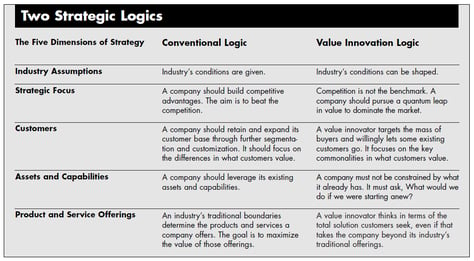Digital Transformation in Asia.
.png)
Digital Transformation in the legal industry can be regarded as ‘hot’, ‘hype’ or ‘hysterical’ depending on which side of the conversation you sit. While the legal industry is a transformation laggard compared to other industries, it is slowly waking up and smelling the coffee. Over the past few years, I have worked hard at understanding value innovation for clients, the role of digital and technology, the transformation of the legal services industry and what it means for the future of law. Most people I speak to agree that digital transformation in legal services is still in its infancy. But are we legal laggards ready to embrace and act on digital transformation?
State of play in Asia
Recently, I facilitated a panel discussion on this topic at a legal conference in Singapore and was joined by Joey Pang from DBS Bank Legal, Stanley Park from Scotiabank, Dennis Diop from Fernbach Software and Pooja Sinha from GLS Law Firm. The diverse nature of our panel and their digital transformation stories were fascinating. From the innovation prowess of DBS and how they have imbued a culture of innovation in the legal team, to GLS’s uptake of blockchain and AI in their everyday practice, to Scotiabank’s use of a powerful digital knowledge tool and Fernbach’s view on responsible and ethical use of AI and Data in the Fourth Industrial Revolution.
When we canvassed the room made up of 120 General Counsels, CLO’s, Senior Counsel, Compliance and Risk experts and asked, ‘Where is your company/team in your digital transformation journey’, their responses were not surprising:
· 2% thought they were advanced in their digital transformation journey
· 30% suggested they were some-way through their transformation
· 50% said they were only just beginning
· 18% didn’t know or didn’t answer
This is fairly common and representative of the Asia-Pacific region. That said, there is huge potential in this industry to optimise efficiency, improve processes and offer new types of legal solutions altogether. And to create better value for customers.
Of course, one of the challenges is defining what digital transformation is or means to you or your company. More critically – what are the value innovation drivers for a digital transformation? Is it to make legal cheaper, faster, simpler? Or to solve the ‘more for less’ problem? Or is it to stay relevant in an increasingly competitive and fragmented landscape?
Value Innovation in Legal Services
To understand value innovation in legal services, we need to touch on strategy. Strategy is largely drawn on an economics discipline and, in its simplest form, is about creating value (for the customer) and capturing value (for differentiation and uniqueness). In its broadest sense, it is concerned with gaining competitive advantage. There are various views or ‘schools of strategy’ which assist our understanding. Conceptual breakthroughs are emerging in terms of the definition of value, strategic moves, value innovation strategy and the firm value system. To date, strategic innovation, a primary source of competitive advantage in ‘mature’ industries, has largely been a nice-to-have in the legal services industry – because the industry has seen little need to change, until now. Customers are demanding value through the entire supply chain of solutions – whether we are in-house counsel, external law firms, NewLaw providers or LegalTech companies.
Kim and Mauborgne, authors of ‘Blue Ocean Strategy’ studied more than 30 companies around the world over a five-year period. Managers were asked to describe their strategic moves and their views on each of the five textbook dimensions of strategy: industry assumptions, strategic focus, customers, assets and capabilities, product and service offerings. The value innovation logic comparison below starts to build a strong ‘Why’ for digital transformation.

They found that companies that successfully achieved and sustained high-growth usually sought out fundamentally different strategies compared to their less successful competitors. The underpinnings of the ‘blue ocean strategy’ suggest that innovation logic was about - more value for less cost – or doing more for less, which has been well communicated in legal circles.

Digital Transformation in Legal Services
Because digital transformation will look different for every company, it can be hard to pinpoint a definition that applies to all. But, in general terms, digital transformation has been defined as the integration of digital technology into all areas of a business resulting in fundamental changes to how businesses operate and how they deliver value to their customers. So, value innovation is a key ingredient. Perhaps more than that, it's a cultural change that requires organisations to continually challenge the status quo, being prepared to experiment often, and failing fast and getting back up, and learning from your mistakes. This sometimes means walking away from long-standing business processes that companies were built upon in favour of relatively new practices that are still being defined.
It is about customer centricity and customer value, automation, data and data analytics, new business models, new systems and processes. But it is also about leadership, about shaping new realities, about taking quantum leaps in innovation, about really understanding the customer journey, and about empowering all through their digital transformation journey.
A recent McKinsey report noted the upside of digital transformation for a business – data driven organisations are 23 times more likely to acquire customers; six times as likely to retain customers; and 19 times as likely to be profitable as a result.
So, regardless of whether we think it is ‘hot’, ‘hype’ or ‘hysterical’ – it is fundamental to the future of law – and shaping the new reality in legal solutions.
Titus Rahiri
Jul 31, 2019
Related Posts.
By: KorumLegal
7 Key Takeaways: Singapore's TechLaw.Fest 2019
The KorumLegal team were a supporting partner of the 2019 TechLaw.Fest event held in Singapore last week represented by Founder & CEO Titus Rahiri, General Manager for Process & Tech, Bill Novomisle..
By: Titus Rahiri
- It has been another interesting year within our industry, and of course, globally as the world continues to navigate its way through the third year of the Covid pandemic, looming geopolitical..
